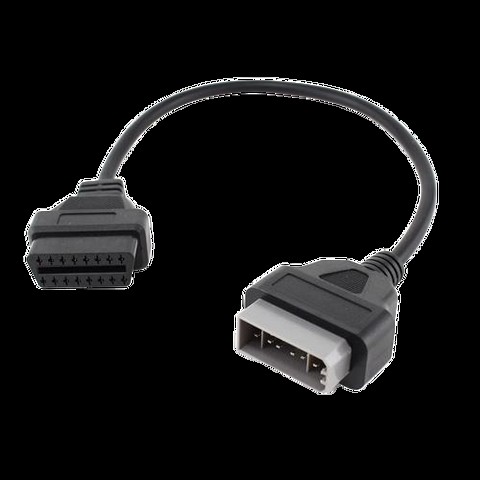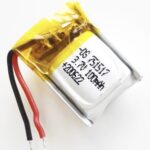Many car owners find themselves puzzled by the different diagnostic systems in their vehicles, particularly OBD1 and OBD2. If you own an older car with an OBD1 system, you might wonder, “Can I add an OBD2 scan port to my OBD1 car?” This is a common question, especially with the widespread availability and affordability of OBD2 scan tools. Let’s clarify the differences between these systems and address the possibility of upgrading your OBD1 car to OBD2.
Understanding OBD1 and OBD2 Systems
OBD stands for On-Board Diagnostics. These systems are designed to monitor various aspects of your vehicle’s performance and emissions, providing valuable data for diagnosing issues. The earlier standard, OBD1, was implemented in vehicles up until the mid-1990s, although some models still used it later. OBD2, a more advanced and standardized system, became mandatory in the USA in 1996 and gradually adopted worldwide. While the original article mentions 2006 as a cutoff, it’s more accurate to say most vehicles from 1996 onwards are OBD2.
OBD2 offers significant improvements over OBD1. It provides standardized diagnostic trouble codes (DTCs) across different manufacturers, making it easier to understand and address problems. OBD2 also offers a broader range of data parameters, giving mechanics and car owners more in-depth information about the vehicle’s condition.
The Misconception of OBD2 Port Conversion
You might think that simply adding an OBD2 port to your OBD1 car would make it compatible with OBD2 scanners. Unfortunately, this is not the case. The OBD port is just a physical connector; the crucial aspect is the underlying communication protocol and the vehicle’s electronic control unit (ECU). OBD1 and OBD2 systems use different communication protocols. An OBD1 car’s ECU is designed to communicate using the older OBD1 protocols, which are fundamentally different from the OBD2 protocols.
Adapters can change the shape of the connector, allowing an OBD2 scan tool to physically plug into an OBD1 port. However, these adapters only change the physical interface; they do not translate or convert the communication protocols. Therefore, even with an adapter, a standard OBD2 scan tool will not be able to communicate with an OBD1 car’s ECU because it’s “speaking” a different language.
Why You Can’t Simply Upgrade to OBD2
The core issue is that upgrading to OBD2 is not just about the port; it’s about the entire vehicle’s diagnostic system. To make an OBD1 car truly OBD2 compliant, you would essentially need to replace the car’s ECU, wiring harness, and potentially various sensors with OBD2-compatible components. This is a complex, expensive, and often impractical undertaking. It’s far more involved than just swapping a port.
For example, older Nissan vehicles often used a 14-pin OBD1 connector.
While adapters exist to connect OBD2 tools to these ports, they do not magically make the car OBD2 compatible.
Utilizing OBD1 Scan Tools for OBD1 Cars
The correct approach for diagnosing OBD1 cars is to use scan tools specifically designed to communicate with OBD1 protocols. These tools are equipped to understand the diagnostic language of older vehicles. Many professional-grade scan tools are backward compatible and can work with both OBD1 and OBD2 vehicles. If a scan tool supports OBD1, it will almost always support OBD2 as well.
For vehicles like older Toyotas with a 22-pin OBD1 port often found in the engine bay:
You will need an OBD1 compatible scanner and potentially an adapter specific to the Toyota 22-pin connector.
Identifying Your Car’s OBD System
The easiest way to determine if your car is OBD1 or OBD2 is often by its year of manufacture. As a general guideline:
- OBD1: Typically vehicles manufactured before 1996, but some models into the early 2000s. Check specific model years.
- OBD2: Most vehicles manufactured from 1996 onwards.
However, there are exceptions. Some vehicles manufactured before 1996 might be OBD2 compliant, and some later models might still use OBD1 protocols in certain systems. The physical location and type of the diagnostic port can also offer clues. OBD1 ports are often found under the dashboard on the driver’s side or even in the engine bay and come in various shapes and pin configurations. OBD2 ports are standardized 16-pin connectors, usually located under the dashboard on the driver’s side.
Below is an example of a standard OBD2 port:
To be absolutely sure, consult your vehicle’s owner’s manual or check a reliable vehicle compatibility list. Check this OBD2 car list for more information.
Conclusion: Focus on Compatibility, Not Conversion
In conclusion, while you can physically add an OBD2-style port to an OBD1 car, it will not magically transform the vehicle into an OBD2 compliant system. Standard OBD2 scan tools will not work with OBD1 cars, even with adapters. To diagnose your OBD1 vehicle effectively, you need to use a scan tool that is specifically compatible with OBD1 protocols. Focus on ensuring your diagnostic tools are compatible with your car’s existing system rather than attempting a complex and unnecessary system conversion.


